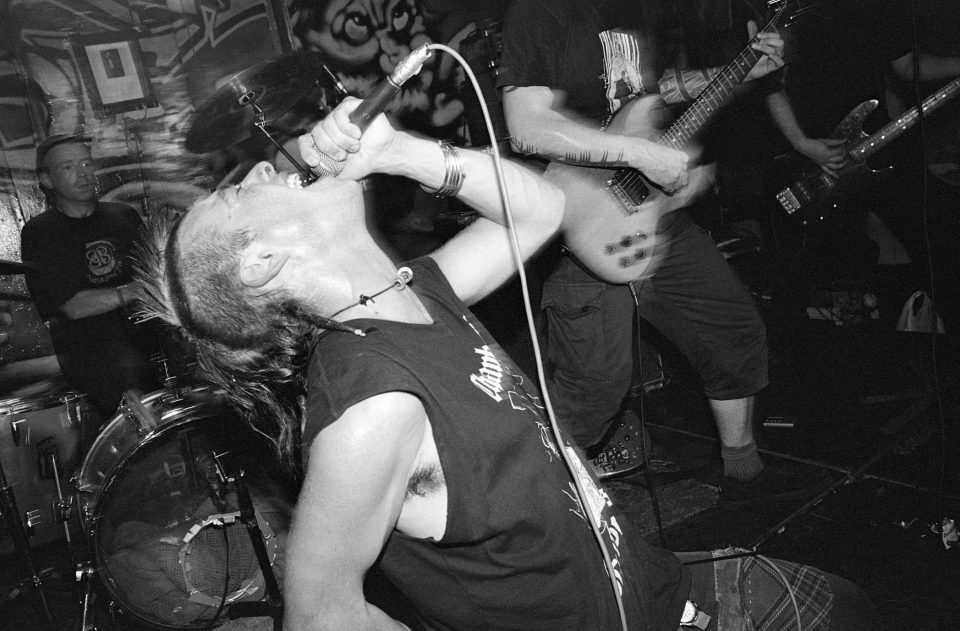
On one of my first research trips to Belfast, back in 2010, I was in a conversation with a fellow about my own age (at the time mid-40s) and the topic turned, as it often does in these circumstances, to what it was like growing up in a place being torn apart by brutal civil violence.
As a working class teenager in the early 1980s living in North Belfast, he was of an age and from a place in which it would have been all too easy to get drawn into the turmoil of the times, winding up with a gun in his hand, probably landing in jail, maybe ending up dead. So I asked him how he managed to stay out of things.
“Simple,” he said, “I was a punk.”
I was reminded of this conversation today when I came across a set of photos taken in one of Belfast’s storied punk venues, a community center called, fittingly, the “Warzone Centre.” The photos are from a recently published book by photographer Ricky Adams, Belfast Punk, which captures the era as it was drawing to a close.
The Guardian last month posted images from the book, with the photographer giving some commentary and context on each of the shots. In his review of Belfast Punk, writer Mark McConville emphasizes punk culture as a unifying force in a divided city and society:
PUNK is most often associated with anarchy but rare pictures have revealed unifying power of punk culture to bring together those from both sides of the conflict during the Troubles in Northern Ireland.
Rather than attempted to destroy society as the 1980s anarchists are usually portrayed, stunning images show Catholic and Protestant punks overcoming the problems of their community by mixing amicably and enjoying themselves at a Belfast youth and community centre, appropriately called “the Warzone Centre”.
In a long essay published by the Irish Times last December, Timothy Heron described Northern Ireland’s punk music culture as a nonsectarian common ground that allowed Protestant and Catholic youth to reject the violence and repression that surrounded them:
It is that ‘‘other nation” of ordinary individuals struggling to cope with the pressures of life which is the focus of this paper, or, more accurately, the ordinary youths, many of them school-age teenagers, who took part in an extraordinary musical subculture which helped them construct their everyday lives in the midst of the Troubles in ways which would conflict with and sometimes subvert the codes of the society they lived in: punk.
It is worth remembering that even under the worst conditions, people can often find ways to push back against the circumstances that might otherwise crush their spirits if not their lives.
The video below, for the Stiff Little Fingers (a legendary Belfast punk band formed in 1977 at the height of the Troubles) song “Alternative Ulster,” gives you an idea of what they and the other punks were rebelling against.
